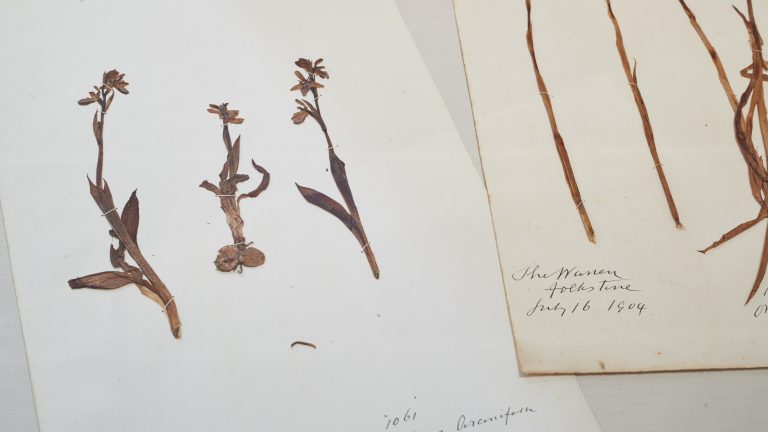Folkestone’s visible geology comprises three distinct layers of sedimentary rock. The Lower Greensand, formed under shallow seas about 120 million years ago, was originally a sandy seabed and animal burrows can be seen fossilised in the rock. Ammonites, oysters, sea urchins and reptile fossils can also be found.
As the sea level rose about 112 million years ago, particles of silt formed a layer called Gault Clay. Ammonites, crustaceans, fish and reptiles, along with microscopic animals called foraminifera inhabited the sea. Gault fossils are easily found on the beach at East Wear Bay.
Chalk began to form about 100 million years ago from the compacted remains of microscopic algae called coccoliths. Fossilised ammonites, bivalves and sea urchins are common but fish and marine reptiles, including ichthyosaurs, can also be found.
Samuel Mackie was the first major collector of native fossils and geology. Much of his collection formed the first museum in Folkestone in 1858. The Museum purchased more fossils from John Griffiths, a renowned expert on local fossils, and many other Folkestone collectors eventually donated their collections; J.J. Giles, W.J. Austen, and Ernest Joy donated significant butterfly and moth collections.

